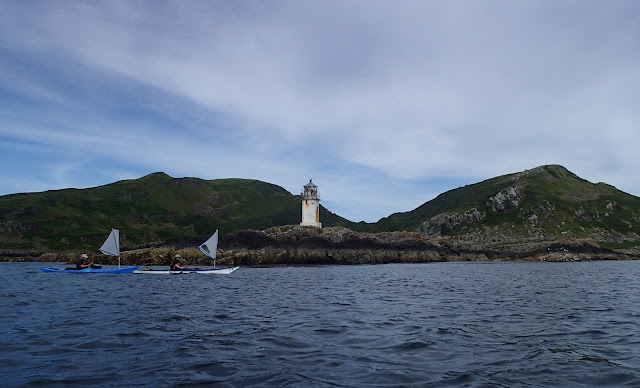The
Cairngorms in the north east of Scotland offer some great long walking routes, whether one intends to do a through-route or to do an "out and back" walk. An appointment with a
Duke of Edinburgh's Award team undertaking a Gold venture gave me the opportunity to to a little of both.
More than most wild country areas in the UK, walking the hills of the Cairngorms requires the ethos of the "long walk-in" as most summits are many hours from the nearest road. The sense of space here is one of the features which defines the region - big views and big skies.
I was bound for the head of Loch Avon (pronounced
A'an and meaning
bright one), considered by many to be the heart of the Cairngorms and one of the real jewels. After meeting with the team I intended to camp in one of the high corries to preserve their (and my) sense of being alone in a wild and remote area.
My route went from
Linn of Dee and up through Glens Lui and Derry. The view ahead in Glen Lui is long; I'd bear right at the wood in the far distance, my destination several hours away. The car park was very busy on an August weekend, but such is the nature of the area that after the first few kilometres I actually saw very few people.
Near the former hunting lodge at the confluence of the
Derry Burn and the Lui Burn a temporary bridge has been erected to replace the one swept away in the huge floods of August 2014. You can read about the extent of the damage caused and about the building of the temporary bridge at Neil Reid's excellent "Cairngorm Wanderer" blog
here and
here. The raw power released in just this one flood event serves to show just how small we are in the landscape - and in my opinion that's a good thought to have.
Perhaps this directed my train of thought to things smaller than the human scale, but nevertheless adapted to their place in the environment with all its sudden shocks. Spotted Orchids (
Dactylorhiza fuchsii) were still in flower.....
..and were joined in the damper ground by the golden flower spikes of Bog Asphodel (
Narthecium ossifragum), a characteristic plant of high and late summer in the Cairngorms.
At the highest extent of the treeline I came across this
Emperor Moth (
Satunia pavonia) caterpillar moving purposefully across the track. A big caterpillar at around 60mm long, it would have started black and orange before changing to bright green with pink spots (often the spots are yellow). The only member of the Genus
Saturnia present in Scotland, the moths have some unusual habits. Male and female are differently coloured, the males fly rapidly during the day and the females much more sluggishly during the night.
The eggs are laid on food plants (mostly heather) in May, the caterpillars are fully grown like this one by August and spin a fibrous cocoon in which they overwinter, surviving even the harsh extremes of weather in the Cairngorms. The adults live only a few weeks and don't feed as moths, spending time finding a mate and restarting the cycle.
I was pleased to see that both the tiny bridge and the Rowan tree at the Coire Etchachan Burn were still intact; the Rowan is about the highest tree in the area and has become a bit of an old friend. It's here that I left the main through-route of the Lairig An Laoigh (
Calves Pass) and branched up into the higher hills.
The
"Hutchie" is a welcome sight at any time, but I wasn't intending to stay at the bothy on this occasion. I stopped by to see that everything was in order and made a mental note to remove a couple of empty gas canisters left on the window sill when I passed on my return leg. I still had a bit of a climb with what now felt a heavy rucsac so after a short rest I set out again up the corrie.....
....to reach a campsite in the upper corrie surrounded by cliffs and high ground. The forecast was for strong south-easterly winds overnight and into the following day so I chose a site for the tent which would give some shelter from this direction - or at least as much shelter as can be found in this wild place. I brewed some tea and rested for a while, just enjoying being out here.
Later in the evening I made the walk and steep descent to the head of Loch Avon to meet with the team, who were camped in one of the most spectacular locations possible. I arrived back at my camp at dusk and ate dinner, aware of the strengthening wind. Sleep came quickly, but it wasn't to be a restful night.....














































